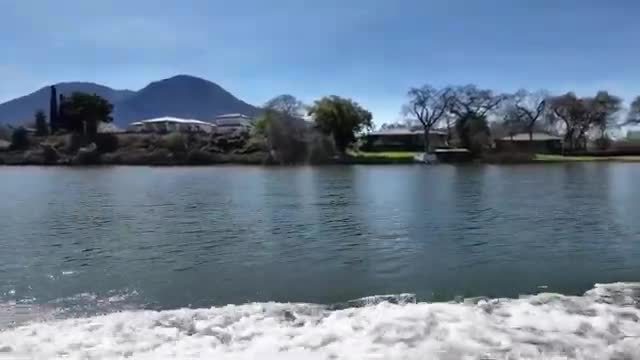Experts call for urgent action to restore Clear Lake health
July 14, 2024 | Events, Lake County, California

This article was created by AI summarizing key points discussed. AI makes mistakes, so for full details and context, please refer to the video of the full meeting. Please report any errors so we can fix them. Report an error »

During a recent government meeting, experts discussed the pressing water quality issues affecting Clear Lake, emphasizing the need for comprehensive management strategies to restore the lake's ecological balance. Water resources engineer highlighted the lake's remarkable productivity, which, while fascinating to biologists, poses challenges for local communities due to the proliferation of pests like cyanobacteria.
The engineer pointed out that the primary contributors to the lake's nutrient overload are phosphorus and iron, which are prevalent in the surrounding volcanic soils. Sediment transport, particularly from road-related erosion, was identified as a significant factor in this nutrient influx. As a response, local agencies, including the Forest Service, are taking steps to reduce sedimentation from roads to improve water quality.
Sarah Ryan, the environmental director for the Big Valley Band of Pomo Indians, shared insights on the tribe's initiatives, including surface water monitoring and mitigation measures like Tule replanting. She noted that while the lake's nutrient richness supports a world-class fishery, it also leads to harmful algal blooms that can pose health risks and disrupt recreational activities.
The discussions underscored the complexity of managing Clear Lake's ecosystem, with experts agreeing that a multifaceted approach is necessary. They emphasized that addressing nutrient levels to combat algal blooms could inadvertently affect the lake's overall productivity, which is vital for local wildlife and fisheries. The consensus was clear: restoring Clear Lake to a balanced state will require a long-term commitment to a variety of interconnected strategies.
The engineer pointed out that the primary contributors to the lake's nutrient overload are phosphorus and iron, which are prevalent in the surrounding volcanic soils. Sediment transport, particularly from road-related erosion, was identified as a significant factor in this nutrient influx. As a response, local agencies, including the Forest Service, are taking steps to reduce sedimentation from roads to improve water quality.
Sarah Ryan, the environmental director for the Big Valley Band of Pomo Indians, shared insights on the tribe's initiatives, including surface water monitoring and mitigation measures like Tule replanting. She noted that while the lake's nutrient richness supports a world-class fishery, it also leads to harmful algal blooms that can pose health risks and disrupt recreational activities.
The discussions underscored the complexity of managing Clear Lake's ecosystem, with experts agreeing that a multifaceted approach is necessary. They emphasized that addressing nutrient levels to combat algal blooms could inadvertently affect the lake's overall productivity, which is vital for local wildlife and fisheries. The consensus was clear: restoring Clear Lake to a balanced state will require a long-term commitment to a variety of interconnected strategies.
View full meeting
This article is based on a recent meeting—watch the full video and explore the complete transcript for deeper insights into the discussion.
View full meeting
